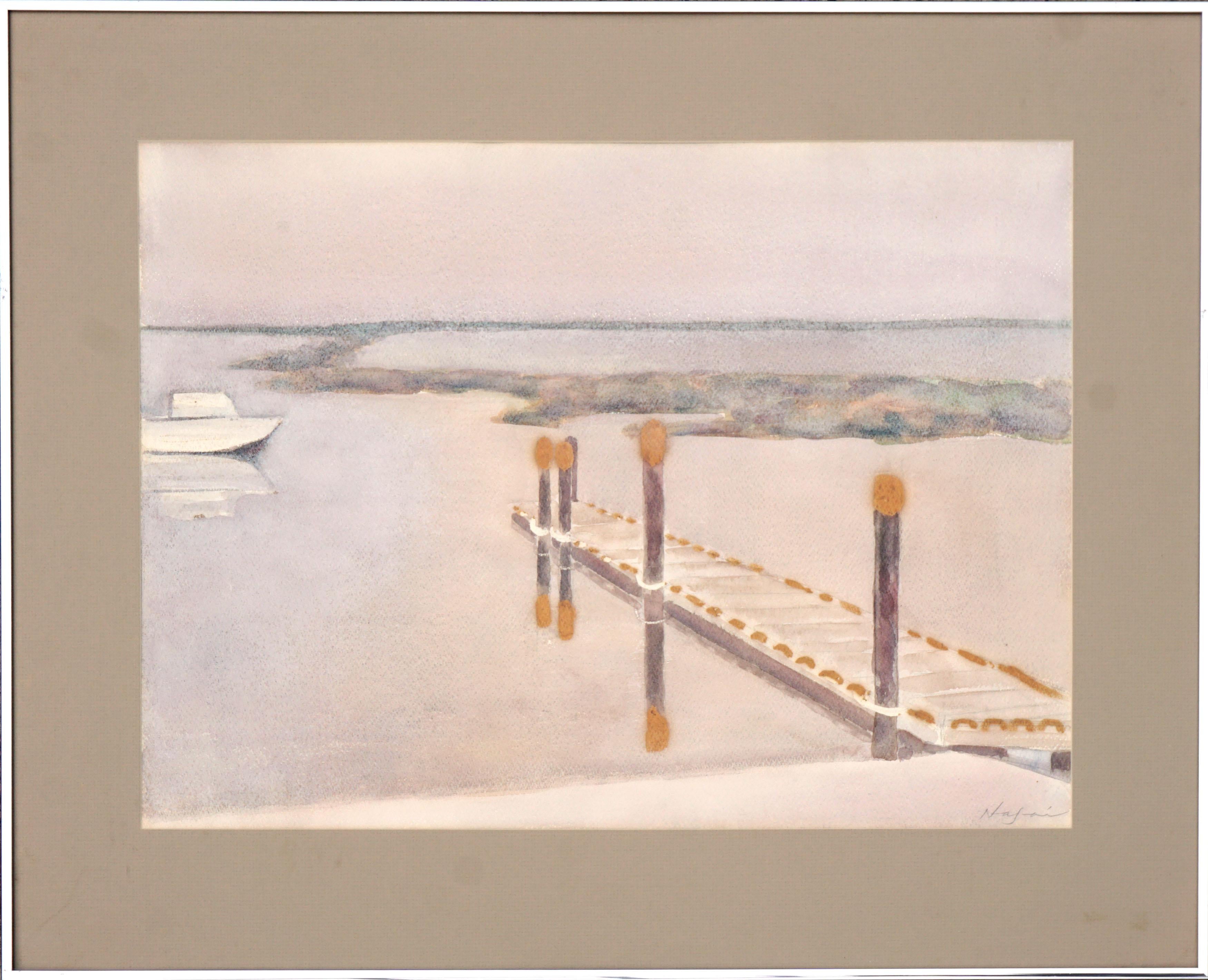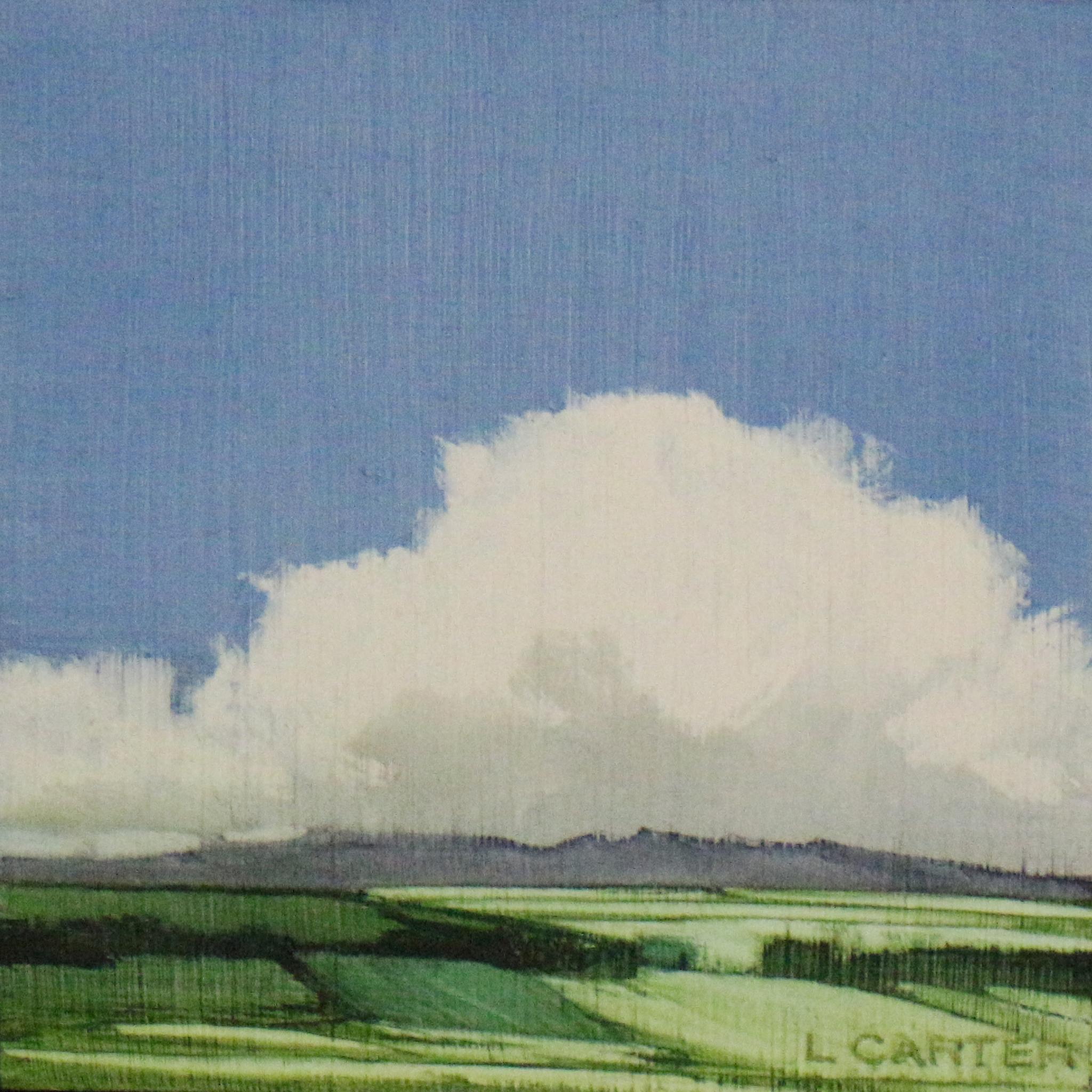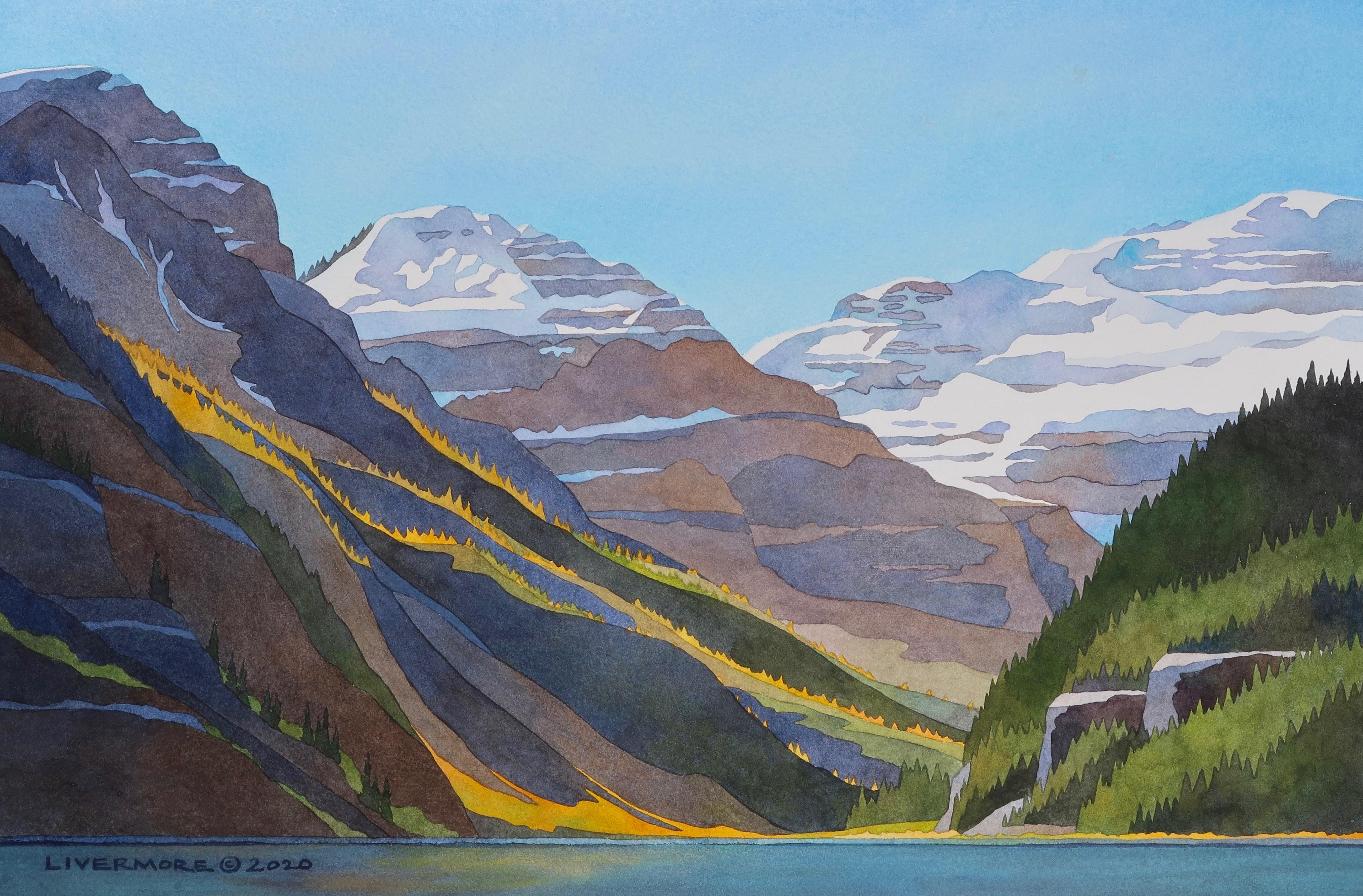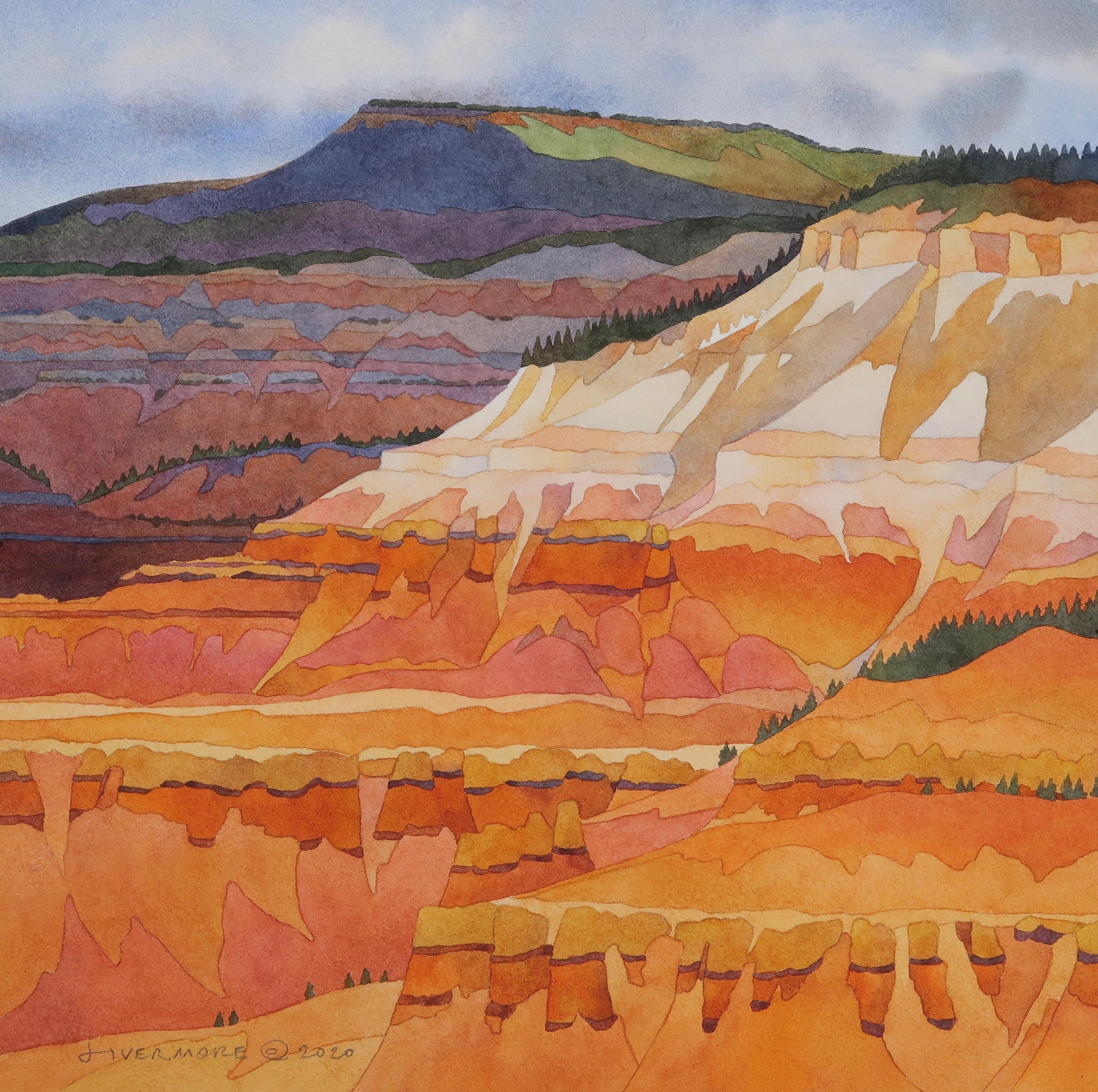Items Similar to "Summer Landscape" Charles Harry Eaton, Tonalist Barbizon Landscape
Want more images or videos?
Request additional images or videos from the seller
1 of 9
Charles Harry Eaton"Summer Landscape" Charles Harry Eaton, Tonalist Barbizon Landscape
About the Item
Charles Harry Eaton
Summer Landscape
Signed lower right
Watercolor on paper
9 1/2 x 13 1/2 inches
Inspired by the Barbizon style of painting and devoted to the Detroit landscape for much of his career, Charles Harry Eaton was largely a self-taught artist who determinedly earned himself a national reputation. Raised in Akron, Ohio, Eaton moved to Detroit in 1867 and studied briefly under John Mix Stanley. The years of 1878 to 1880 found him momentarily in Holly, Michigan, followed by two years in Chicago, and nearly ten years in New York City. During the 1890s, the artist finally settled in Leonia, New Jersey, where he remained for the rest of his career.
Eaton received prizes—including gold medals—from the Boston Art Club (1884-1899), the American Water Color Society (1898), the Philadelphia Art Club (1900) and the Pan-American Exposition (1901, posthumously). He was a member of the Salmagundi Club, the Boston Art Club, the Detroit Art Association and the American Water Color Society, and an Associate Member of the National Academy.
- Creator:Charles Harry Eaton (1850-1901, American)
- Dimensions:Height: 19.25 in (48.9 cm)Width: 23.25 in (59.06 cm)
- Medium:
- Movement & Style:
- Period:
- Condition:
- Gallery Location:New York, NY
- Reference Number:1stDibs: LU1841212555272
About the Seller
5.0
Platinum Seller
These expertly vetted sellers are 1stDibs' most experienced sellers and are rated highest by our customers.
Established in 2021
1stDibs seller since 2022
59 sales on 1stDibs
Typical response time: 1 hour
- ShippingRetrieving quote...Ships From: New York, NY
- Return PolicyA return for this item may be initiated within 3 days of delivery.
More From This SellerView All
- "Afternoon Sun, " Ann Wyeth McCoy, Interior and LandscapeLocated in New York, NYAnn Wyeth McCoy (1915 - 2005) Afternoon Sun Watercolor on paper Sheet 24 x 18 inches Signed lower left Provenance: Somerville Manning Gallery Private ...Category
20th Century American Realist Landscape Drawings and Watercolors
MaterialsPaper, Watercolor
- "Gloucester Harbor at Sunset, " John Hare, Cape Ann, New England Watercolor ViewLocated in New York, NYJohn Hare Gloucester Harbor at Sunset, Massachusetts Signed lower right Watercolor on paper 16 x 12 inches John Cuthbert Hare, 1908-1978, was a watercolorist who painted boats, seascapes and harbor scenes. He was primarily associated New England, especially Cape Cod, Massachusetts where he spent his summers from 1938 to 1965. However, he was in Florida where he was a member of the St. Augustine Art Association, and other locations on the East Coast. It is likely Hare was born in New York City. He first studied commercial art in Brooklyn at the Pratt Institute and also studied at the Art Students League in Manhattan. He worked for Hearst newspapers corporation, and in 1933 married. In the next few years, he and his wife traveled extensively, camping and painting and exhibiting his work in galleries. In 1935, they visited St. Augustine and an exhibition of his watercolors was held there in the old bank...Category
Mid-20th Century Impressionist Landscape Drawings and Watercolors
MaterialsPaper, Watercolor
- "New York City Skyline View from the East River, " Lionel Reiss, Jewish ArtistBy Lionel ReissLocated in New York, NYLionel S. Reiss (1894 - 1988) New York City Skyline View from the East River Watercolor on paper 13 x 19 inches Signed lower left In describing his own style, Lionel Reiss wrote, “By nature, inclination, and training, I have long since recognized the fact that...I belong to the category of those who can only gladly affirm the reality of the world I live in.” Reiss’s subject matter was wide-ranging, including gritty New York scenes, landscapes of bucolic Bucks County, Pennsylvania, and seascapes around Gloucester, Massachusetts. However, it was as a painter of Jewish life—both in Israel and in Europe before World War II—that Reiss excelled. I.B. Singer, the Nobel Prize winner for Literature, noted that Reiss was “essentially an artist of the nineteenth century, and because of this he had the power and the courage to tell visually the story of a people.” Although Reiss was born in Jaroslaw, Poland, his family immigrated to the United States in 1898 when he was four years old. Reiss's family settled on New York City’s Lower East Side and he lived in the city for most of his life. Reiss attended the Art Students League and then worked as a commercial artist for newspapers and publishers. As art director for Metro-Goldwyn-Mayer, he supposedly created the studio’s famous lion logo. After World War I, Reiss became fascinated with Jewish life in the ‘Old World.’ In 1921 he left his advertising work and spent the next ten years traveling in Europe, the Middle East, and North Africa. Like noted Jewish photographers Alter Kacyzne and Roman Vishniac, Reiss depicted Jewish life in Poland prior to World War II. He later wrote, “My trip encompassed three main objectives: to make ethnic studies of Jewish types wherever I traveled; to paint and draw Jewish life, as I saw it and felt it, in all aspects; and to round out my work in Israel.” In Europe, Reiss recorded quotidian scenes in a variety of media and different settings such as Paris, Amsterdam, the Venice ghetto, the Jewish cemetery in Prague, and an array of shops, synagogues, streets, and marketplaces in the Jewish quarters of Warsaw, Lodz, Krakow, Lublin, Vilna, Ternopil, and Kovno. He paid great attention to details of dress, hair, and facial features, and his work became noted for its descriptive quality. A selection of Reiss’s portraits appeared in 1938 in his book My Models Were Jews. In this book, published on the eve of the Holocaust, Reiss argued that there was “no such thing as a ‘Jewish race’.” Instead, he claimed that the Jewish people were a cultural group with a great deal of diversity within and between Jewish communities around the world. Franz Boas...Category
1940s American Modern Landscape Drawings and Watercolors
MaterialsPaper, Watercolor
- "Gray Morning" James MacMaster, Scottish Seascape, Marine Ship LandscapeBy James MacMasterLocated in New York, NYJames MacMaster Gray Morning Signed and titled lower left Watercolor on paper 10 1/4 x 14 inches Provenance: Private Collection, New JerseyCategory
Late 19th Century Landscape Paintings
MaterialsPaper, Watercolor
- "Train Station, " Max Kuehne, Industrial City Scene, American ImpressionismBy Max KuehneLocated in New York, NYMax Kuehne (1880 - 1968) Train Station, circa 1910 Watercolor on paper 8 1/4 x 10 1/4 inches Signed lower right Provenance: Private Collection, Illinois Max Kuehne was born in Halle, Germany on November 7, 1880. During his adolescence the family immigrated to America and settled in Flushing, New York. As a young man, Max was active in rowing events, bicycle racing, swimming and sailing. After experimenting with various occupations, Kuehne decided to study art, which led him to William Merritt Chase's famous school in New York; he was trained by Chase himself, then by Kenneth Hayes Miller. Chase was at the peak of his career, and his portraits were especially in demand. Kuehne would have profited from Chase's invaluable lessons in technique, as well as his inspirational personality. Miller, only four years older than Kuehne, was another of the many artists to benefit from Chase's teachings. Even though Miller still would have been under the spell of Chase upon Kuehne's arrival, he was already experimenting with an aestheticism that went beyond Chase's realism and virtuosity of the brush. Later Miller developed a style dependent upon volumetric figures that recall Italian Renaissance prototypes. Kuehne moved from Miller to Robert Henri in 1909. Rockwell Kent, who also studied under Chase, Miller, and Henri, expressed what he felt were their respective contributions: "As Chase had taught us to use our eyes, and Henri to enlist our hearts, Miller called on us to use our heads." (Rockwell Kent, It's Me O Lord: The Autobiography of Rockwell Kent. New York: Dodd, Mead and Co., 1955, p. 83). Henri prompted Kuehne to search out the unvarnished realities of urban living; a notable portion of Henri's stylistic formula was incorporated into his work. Having received such a thorough foundation in art, Kuehne spent a year in Europe's major art museums to study techniques of the old masters. His son Richard named Ernest Lawson as one of Max Kuehne's European traveling companions. In 1911 Kuehne moved to New York where he maintained a studio and painted everyday scenes around him, using the rather Manet-like, dark palette of Henri. A trip to Gloucester during the following summer engendered a brighter palette. In the words of Gallatin (1924, p. 60), during that summer Kuehne "executed some of his most successful pictures, paintings full of sunlight . . . revealing the fact that he was becoming a colorist of considerable distinction." Kuehne was away in England the year of the Armory Show (1913), where he worked on powerful, painterly seascapes on the rocky shores of Cornwall. Possibly inspired by Henri - who had discovered Madrid in 1900 then took classes there in 1906, 1908 and 1912 - Kuehne visited Spain in 1914; in all, he would spend three years there, maintaining a studio in Granada. He developed his own impressionism and a greater simplicity while in Spain, under the influence of the brilliant Mediterranean light. George Bellows convinced Kuehne to spend the summer of 1919 in Rockport, Maine (near Camden). The influence of Bellows was more than casual; he would have intensified Kuehne's commitment to paint life "in the raw" around him. After another brief trip to Spain in 1920, Kuehne went to the other Rockport (Cape Ann, Massachusetts) where he was accepted as a member of the vigorous art colony, spearheaded by Aldro T. Hibbard. Rockport's picturesque ambiance fulfilled the needs of an artist-sailor: as a writer in the Gloucester Daily Times explained, "Max Kuehne came to Rockport to paint, but he stayed to sail." The 1920s was a boom decade for Cape Ann, as it was for the rest of the nation. Kuehne's studio in Rockport was formerly occupied by Jonas Lie. Kuehne spent the summer of 1923 in Paris, where in July, André Breton started a brawl as the curtain went up on a play by his rival Tristan Tzara; the event signified the demise of the Dada movement. Kuehne could not relate to this avant-garde art but was apparently influenced by more traditional painters — the Fauves, Nabis, and painters such as Bonnard. Gallatin perceived a looser handling and more brilliant color in the pictures Kuehne brought back to the States in the fall. In 1926, Kuehne won the First Honorable Mention at the Carnegie Institute, and he re-exhibited there, for example, in 1937 (Before the Wind). Besides painting, Kuehne did sculpture, decorative screens, and furniture work with carved and gilded molding. In addition, he designed and carved his own frames, and John Taylor Adams encouraged Kuehne to execute etchings. Through his talents in all these media he was able to survive the Depression, and during the 1940s and 1950s these activities almost eclipsed his easel painting. In later years, Kuehne's landscapes and still-lifes show the influence of Cézanne and Bonnard, and his style changed radically. Max Kuehne died in 1968. He exhibited his work at the National Academy of Design, the Art Institute of Chicago, the Carnegie Institute in Pittsburgh, the Memorial Art Gallery of the University of Rochester, and in various New York City galleries. Kuehne's works are in the following public collections: the Detroit Institute of Arts (Marine Headland), the Whitney Museum (Diamond Hill...Category
1910s American Impressionist Landscape Drawings and Watercolors
MaterialsPaper, Watercolor
- "House on a Hill, " Clara Bell, Female Artist Landscape, American ImpressionismLocated in New York, NYClara Louise Bell (1886 - 1978) House on a Hill, circa 1935 Gouache on artist board 7 1/4 x 9 7/8 inches Clara Louise Bell (Mrs.Bela Janowsky) was b...Category
1930s American Impressionist Landscape Paintings
MaterialsGouache, Board
You May Also Like
- Boat at the Dock, Alviso Bay Area Tonalist Landscape Watercolor by Iku NagaiBy Iku NagaiLocated in Soquel, CABoat at the Dock, Alviso Bay Area Tonalist Landscape Watercolor by Iku Nagai Lovely Tonalist watercolor landscape of Alviso, California by Iku K. Nagai (Japanese/American, b. 1932)....Category
1980s Tonalist Landscape Paintings
MaterialsWatercolor, Laid Paper
- Mal's (At Cliff Evan's Cabin)Located in Salt Lake City, UTMal's (At Cliff Evan's Cabin), by Waldo Midgley. watercolor, 9 x 12 inches (Framed size: 18.5 x 21 inches), $1,500 Waldo Midgley (1888-1986) had a fruit...Category
Mid-20th Century Ashcan School Landscape Drawings and Watercolors
MaterialsWatercolor
- Bridge to Brooklyn #382Located in Salt Lake City, UTBridge to Brooklyn #382, watercolor, 10.5 x 14 inches (Framed size: 18 x 21 inches), $1,750 Waldo Midgley (1888-1986) had a fruitful career spanning eig...Category
1970s Ashcan School Landscape Drawings and Watercolors
MaterialsWatercolor
- AssertiveLocated in Salt Lake City, UTAssertive (2018), 6 x 6 inches (framed size: 7.5 x 7.5 inches), watercolor on gesso on panel by Lindey Carter. $560 Lindey Carter’s delicate watercolor ...Category
2010s Other Art Style Landscape Paintings
MaterialsGesso, Watercolor, Panel
- Larch Season, Lake LouiseBy Rebecca LivermoreLocated in Salt Lake City, UTLarch Season, Lake Louise 10 x 15 inches (Framed size: 21.75 x 17.25 inches) watercolor on paper (painted using lightfast pigments, acid-free paper and archival framing materials) $2,450 Landscape: Banff National Park, Canada. Snowy peaks above Lake Louise. - Rebecca Livermore...Category
2010s Other Art Style Landscape Drawings and Watercolors
MaterialsWatercolor, Archival Paper
- Cedar Breaks SaturationBy Rebecca LivermoreLocated in Salt Lake City, UTCedar Breaks Saturation 11 x 11 inches (Framed size: 18 x 17.75 inches) watercolor on paper (painted using lightfast pigments, acid-free paper and archival framing materials) $1,850 Landscape: Cedar Breaks National Monument, Utah. Colorful eroded sandstone cliffs. - Rebecca Livermore...Category
2010s Other Art Style Landscape Drawings and Watercolors
MaterialsWatercolor, Archival Paper





